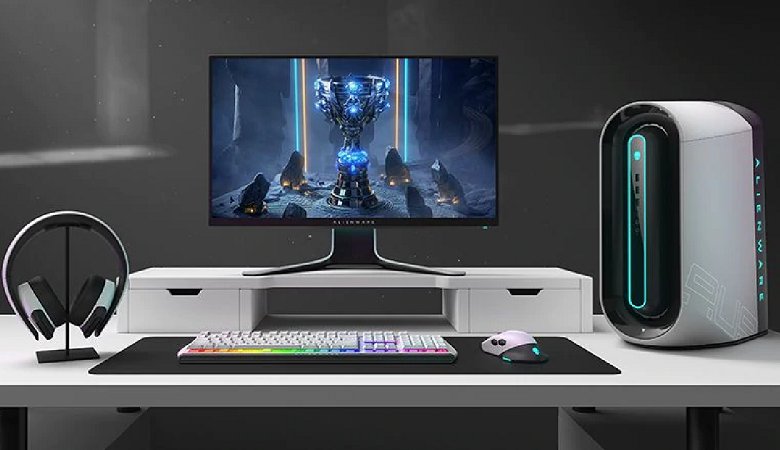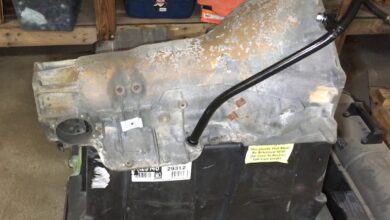Everything You Need To Know – Alienware Aurora 2019

If you’re in the market for a new gaming PC, you may be wondering what’s new with the Alienware Aurora 2019. This review will cover the most notable features of this newest gaming PC, such as its Intel Core i7-7700HQ quad-core processor, Tool-less upgrades, and the Smart RGB lighting system. It’s an excellent starting point for anyone considering a new system, as it will help you decide which one to buy.
Intel Core i7-7700HQ quad-core processor
The Alienware Aurora 2019 is equipped with an Intel Core i7-7700HQ quadcore processor, the seventh generation of this popular chip. It has an impressive 3.8GHz clock speed and comes with eight MB of cache memory. Thanks to this processor, Alienware Aurora 2019 can run programs without glitches. And since it has a high-quality graphics card, the Alienware Aurora is able to deliver excellent visuals.
The Alienware Aurora has an 8-core Intel Core i7-9700K processor. It’s capable of reaching speeds of up to 3.8GHz, making it one of the fastest processors on the market. The processor also comes with 8MB of store memory, ensuring that programs run smoothly without errors. If you’re in the market for a new gaming PC, look no further than an Alienware Aurora. It is a powerful, sleek and elegant machine that delivers the performance and quality you expect. It’s also compatible with a wide variety of monitors.
Zero-fat design
The zero-fat design of the Alienware Aurora gaming PC takes inspiration from Area-51 thermal ergonomics and incorporates tool-less upgrades. Many people have praised the Aurora for its quiet operation and high frame rates. This gaming laptop also boasts tool-less upgrades that allow you to upgrade components without reinstalling your system. The zero-fat design on the Alienware Aurora is a huge perk for gamers.
The new zero-fat design on Alienware Aurora gaming PC features integrated cooling and full customization for gamers. It also supports both AMD and NVIDIA processors. It’s the first mid-tower gaming desktop from Alienware. It also offers a liquid cooling system and ample room for a VR headset. You can read the latest reviews and learn more about the Alienware Aurora at the company’s tech blog.
Tool-less upgrades
One of the many features that makes the Alienware Aurora so easy to upgrade is its innovative PSU swing-arm design. With its tool-less graphics bays and compact chassis, you can easily swap out a graphics card, RAM, or storage drive with relative ease. This design is also known for its reduced vibrations and side vent airflow. As a result, the Alienware Aurora is considered future-ready.
New Alienware devices come with Alien Autopsy, a service that offers advice and alerts when your system is experiencing an issue. Other features of the Alienware Aurora 2019 include automated backup and media file recovery. Alienware’s service and support center helps reduce the hassle of dealing with warranty information. A warranty is included with your Alienware system, so you don’t have to worry about the cost of a repair if the hardware breaks. In addition, you get one year of accidental damage coverage, plus 1-year of Premium Plus Services from Dell.
Smart RGB lighting system
Despite its plastic build, the Alienware Aurora 2019 features a well-designed interior, with LEDs that make the space look more appealing than previous generations. It also has an incredibly powerful Core i7 processor and RTX 2080 graphics. The Alienware Aurora is a worthy upgrade for gamers and enthusiasts alike. Here are three reasons to buy this gaming computer:
The Alienware Aurora’s design is reminiscent of legendary gaming PCs from the past. Its iconic central loop, bold, continuous lighting, and dynamic color versatility are all trademarks of the Aurora. It also boasts thoughtfully placed front and rear I/O ports, upgradeable components, and a functional front airway. The front strip has hexagonal side vents to maximize air movement. Alienware Aurora’s RGB lighting is one of the most versatile on the market, and you’ll love it if you’re playing competitive games.
Final Words:
The Alienware Aurora 2019 is one of the most powerful gaming desktops available today. It offers a micro-ATX form factor, plenty of connectivity options, easy maintenance features, and a smart RGB lighting system. The Aurora’s 8th generation Intel Core i5 processor and up to 64GB of DDR4 memory are also a highlight. With a 1-year limited warranty, this gaming desktop is a solid choice for gamers. Although it’s more expensive than its competitors, it’s still a good value for money if you can justify the price tag.




